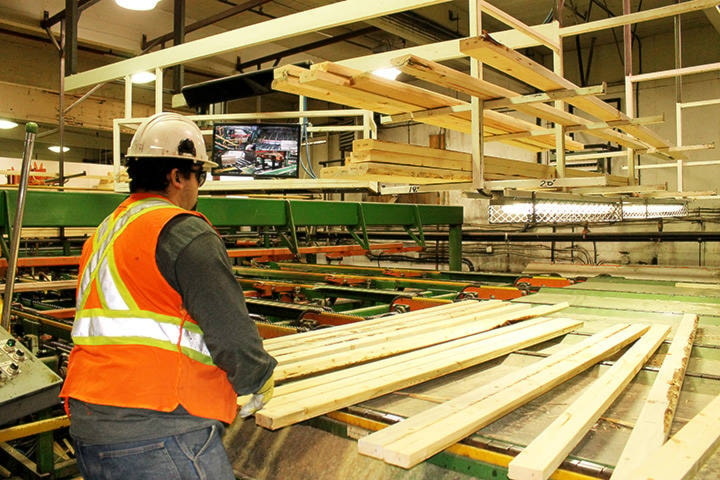John Rustad has recently spoken about the challenges that the forest products industry is currently facing in northern B.C.
The MLA for Nechako Lakes painted a bleak picture of the industry, mentioning challenges associated with the softwood lumber agreement, annual allowable cut reductions, spruce beetle and duties imposed by the U.S.
“There’s no real opportunity in my mind to see a softwood lumber deal any time soon,” he said during a recent event. “It looks to me that it’s going to be between three to five years before we get to another softwood lumber deal.”
The 2006 softwood lumber agreement, which provided stability and predictability for industry on both sides of the border, expired on Oct. 12, 2015.
“I’d like to be an optimist on it, but the reality is that the U.S. Lumber Coalition… what they’re asking is completely unrealistic,” he continued.
“When we [B.C. Liberals] were still in government, we were really close to being able to reach a deal between Canada and the U.S., and we took the framework of that deal to [Canadian] producers. The U.S. took the [same] framework to the U.S. Lumber Coalition and they just rejected it. So there haven’t been any substantial negotiations since August between Canada and the U.S.”
“We’re gonna have to fight this in court, go through a process, win, which we always have, to get them [U.S. Lumber Coalition] to the table to do it together.”
High lumber prices offsetting impacts
According to Rustad, high lumber prices are helping offset many of the impacts that the Canadian forest products industry is facing.
“Quite frankly, with lumber prices as high as they are, if we can get tariffs down to 15 per cent, with free access to the United States, I think that’s good enough,” he said. “I don’t like the fact that there are tariffs at all, but maybe that’s good enough.”
Last November the U.S. Department of Commerce announced its final determination of duties of 20.83 per cent to be applied to the majority of Canadian softwood lumber shipments entering the U.S.
“With lumber prices high, it will not be very impactful; but if lumber prices start dropping off, it will become a much more serious issue.”
Annual allowable cut reductions
Another pressing issue that the forest products industry is facing is the reduction in annual allowable cut (AAC).
“We’ve seen the first drop, and we’ll see another one in 2020. That will impact of number of mills in the region,” said Rustad. “It’s gonna create some challenges in our communities.”
“Where the impacts will fall it’s hard to say, but there will be some impacts for sure,” said Rustad.
Spruce beetle growing faster than expected
Rustad said the spruce beetle, a forest pest that is native to spruce forests and attacks the inner bark of these trees, is a growing concern in British Columbia.
“That is a problem that’s growing way faster than I thought,” he said. “The magnitude of the problem wasn’t well known in previous years.”
According to the province’s latest areal overview survey, the total infested area in B.C. has nearly doubled this year – from 283,083 hectares in 2016 to 501,873 hectares in 2017.
While the situation has gotten worse in the Lakes and Prince George timber supply areas (TSA), the Morice TSA has remained fairly stable. Over 2900 hectares were affected in 2017 – similar to 2014.
“What we need to do is have strategies and try to utilize it [timber supply] as much as possible and work our way through it.”
